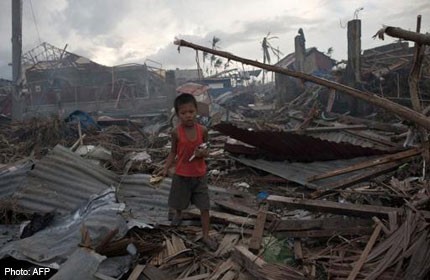Lessons in disaster relief from Odisha

Despite the warnings and apparent preparedness, no one living in the area anticipated the ferocity of Super Typhoon Haiyan, which unleashed its awesome power on the Philippine island of Leyte and the coastal areas of Vietnam earlier this month. The storm left over 5,200 people dead and the city of Tacloban in a heap of rubble.
Haiyan also exposed a fundamental flaw in ASEAN's preparedness - a confidence bordering on complacency.
In this regard, the recent experience of the east Indian state of Odisha (formerly known as Orissa) is instructive, particularly when it comes to preparedness, response and recovery. One month before Haiyan wreaked havoc in the Philippines, super-cyclone Phailin caused massive destruction in Odisha.
Before the storm arrived, more than half a million people were evacuated from vulnerable coastal areas. The Odisha government also provided 1,000 shelters. It was a significant improvement over the situation in 1999, when more than 15,000 people died after a similarly powerful cyclone hit the state.
In the case of Phailin, the local government was able to minimise the human misery by taking the following steps:
Dry food packets, candles and polythene sheets to construct temporary shelters had been prepared in advance.
Tellingly, there was no controversy about the response of the state or national governments to Phailin, only accolades from the international community, including the United Nations.
The Philippines has much to learn from Odisha's experience, particularly when it comes to the timeliness and effectiveness of its response.
While national and local governments in the Philippines continue to assess the extent of the damage caused by Haiyan, as well as the more immediate threat of disease, the international community and local NGOs have been left to provide much-needed relief amid recrimination and criticism.
The recovery will be a painful process. In democracies, leaders do not always have the freedom to act to ensure that the job is done effectively. Philippine politicians must therefore put aside their differences to ensure that post-Haiyan reconstruction efforts can be carried out successfully.
Coordination is critical. Natural disasters demand inter-ministerial and inter-agency cooperation, especially between national and local governments. External and domestic assistance also needs to be coordinated. This is often difficult in situations where a country's internal cooperation mechanisms appear to be slow and confused.
In these challenging times, national coordinating bodies must have the mandate to act decisively, rising above inter-ministerial incoherence. The experiences of regional and international organisations, including civil society organisations, which can have more technical expertise and resources to address disasters in developing countries, must also be coordinated effectively.
Fortunately, ASEAN has had the foresight to establish regional coordinating mechanisms to address these very concerns and to mediate between competing international interests.
The 2005 ASEAN Agreement on Disaster Management and Emergency Response was designed to promote cooperation and collaboration among member states in disaster response.
The agreement also established the ASEAN Committee on Disaster Management to develop standard operating procedures and capacity-building activities. The ASEAN Coordinating Centre for Humanitarian Assistance on Disaster Management was set up to facilitate cooperation with international organisations and among member states.
After Cyclone Nargis ravaged Myanmar in 2008, the ASEAN Humanitarian Task Force was also established. Chaired by the secretary-general of ASEAN, this coordination mechanism was set up "to facilitate the effective distribution and utilisation of assistance from the international community, including the expeditious and effective deployment of relief workers, especially health and medical personnel".
Haiyan provides the opportunity for ASEAN to demonstrate its solidarity and good neighbourliness by putting these mechanisms into practice. Indeed, many observers see Haiyan as an important test. While ASEAN member states have been generous, ASEAN as an organisation has been criticised for being slow to respond.
As a regional organisation known for its humanitarian achievements in responding to several natural disasters in the region, including Cyclone Nargis in Myanmar, ASEAN has a responsibility to take the lead in helping the Philippines. In this instance, the chair country of ASEAN and the ASEAN secretary-general (who is also the ASEAN humanitarian assistance coordinator) must mobilise the power of office to the fullest extent. ASEAN's credibility is at stake here, and the ramifications go far beyond the immediate relief operations it should now be organising.
The Philippines, like many other governments in the region, is already burdened by internal challenges on several fronts. By exposing the shortcomings of national and local officials as well as the lack of coordination between the national and local governments, however, the typhoon could be a game-changer. Philippine politicians now have an opportunity to work together instead of blaming each other.
The government of President Benigno Aquino must move quickly to restore order from the chaos. He must make bold decisions in order to mitigate the effects of natural disasters from typhoons like Haiyan in the future. A strong bipartisan team of planners should be formed to look into the matter.
All this requires visionary leadership.
stopinion@sph.com.sg
The writer is currently the Tun Abdul Razak Fellow at the Oxford Centre for Islamic Studies in the United Kingdom. He was the secretary-general of ASEAN from 2008 to 2013.

Get a copy of The Straits Times or go to straitstimes.com for more stories.